Priority signs
Priority traffic signs indicate the order in which vehicles should pass intersection points. Vehicles often come into conflict with other vehicles and pedestrians because their intended courses of travel intersect, and thus interfere with each other's routes. The general principle that establishes who has the right to go first is called "right of way" or "priority". It establishes who has the right to use the conflicting part of the road and who has to wait until the other does so. The vehicle that does not need to wait is said to "have the right of way" or to "have priority."
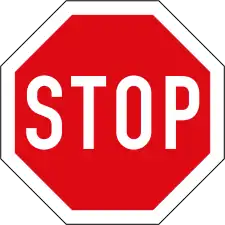
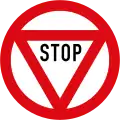 Stop
Stop Yield or Give Way
Yield or Give Way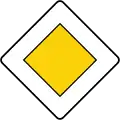 Priority road. Indicates that you have priority at all following crossroads until the end of the priority road.
Priority road. Indicates that you have priority at all following crossroads until the end of the priority road.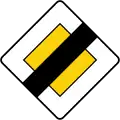 End of priority road
End of priority road Sign indicating the route of priority road (thick line) at an intersection and defining the priority
Sign indicating the route of priority road (thick line) at an intersection and defining the priority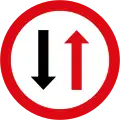 Give way on oncoming traffic
Give way on oncoming traffic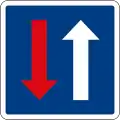 Priority over oncoming traffic
Priority over oncoming traffic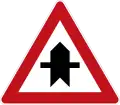 Dangerous intersection with priority indication (for the next intersection only). Different variants of the sign can be used on both priority- and non-priority roads. Each sign has the thicker line indicating the road or direction that has priority with the viewer's own direction being from the bottom of the sign.
Dangerous intersection with priority indication (for the next intersection only). Different variants of the sign can be used on both priority- and non-priority roads. Each sign has the thicker line indicating the road or direction that has priority with the viewer's own direction being from the bottom of the sign.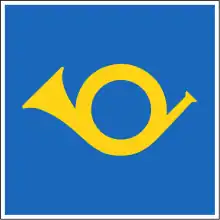 Swiss mountain postal road sign: priority given to public transport, such as postal bus (pay special attention to the specific three-tone-horn of the postal bus approaching hairpin bends and wait before the bend; traffic users must follow instructions given by public transport drivers)
Swiss mountain postal road sign: priority given to public transport, such as postal bus (pay special attention to the specific three-tone-horn of the postal bus approaching hairpin bends and wait before the bend; traffic users must follow instructions given by public transport drivers)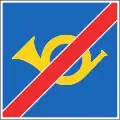 Swiss End of mountain postal road
Swiss End of mountain postal road
This article is issued from Wikipedia. The text is licensed under Creative Commons - Attribution - Sharealike. Additional terms may apply for the media files.